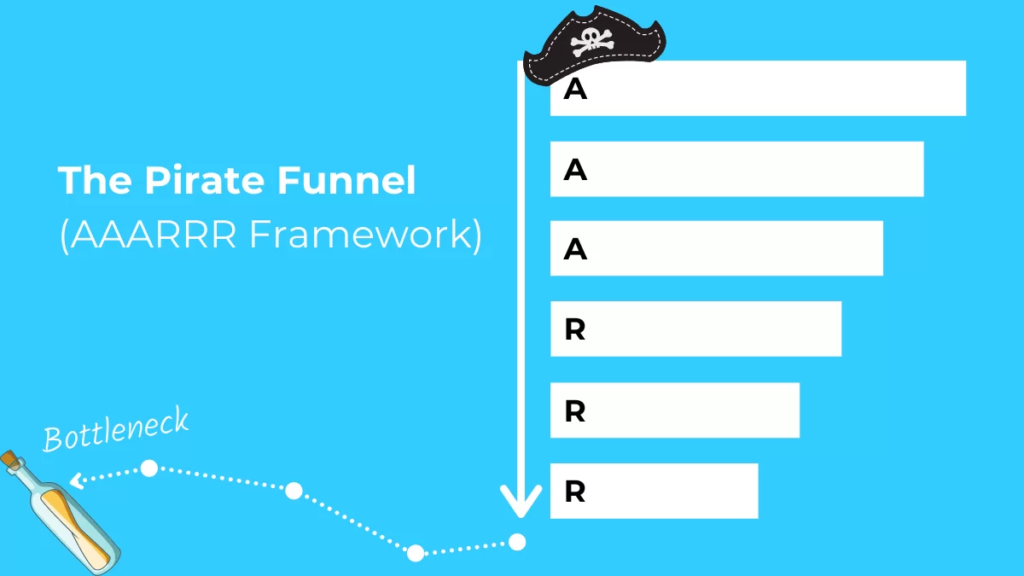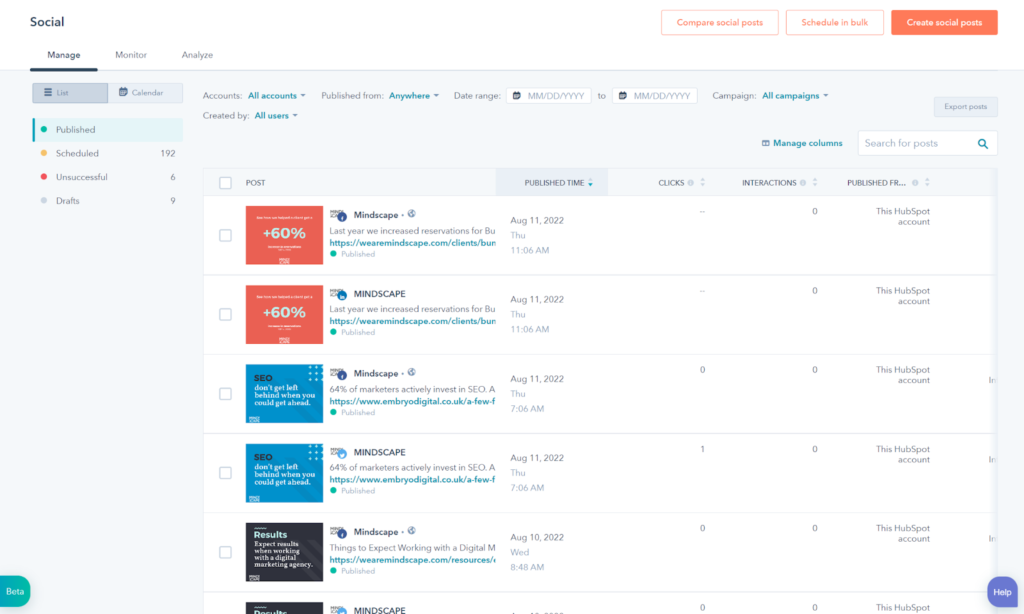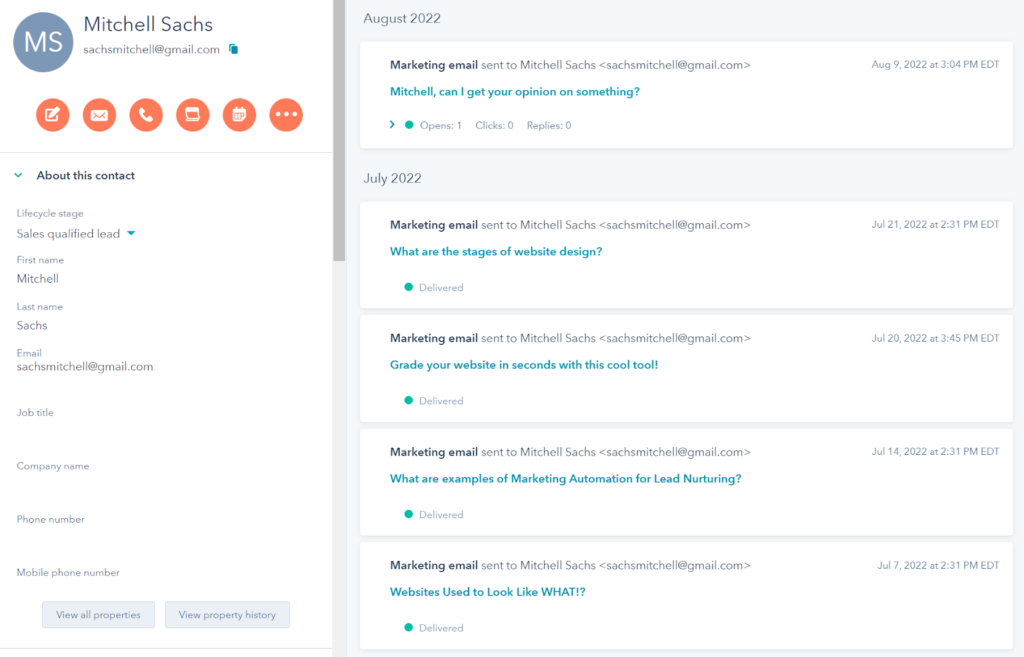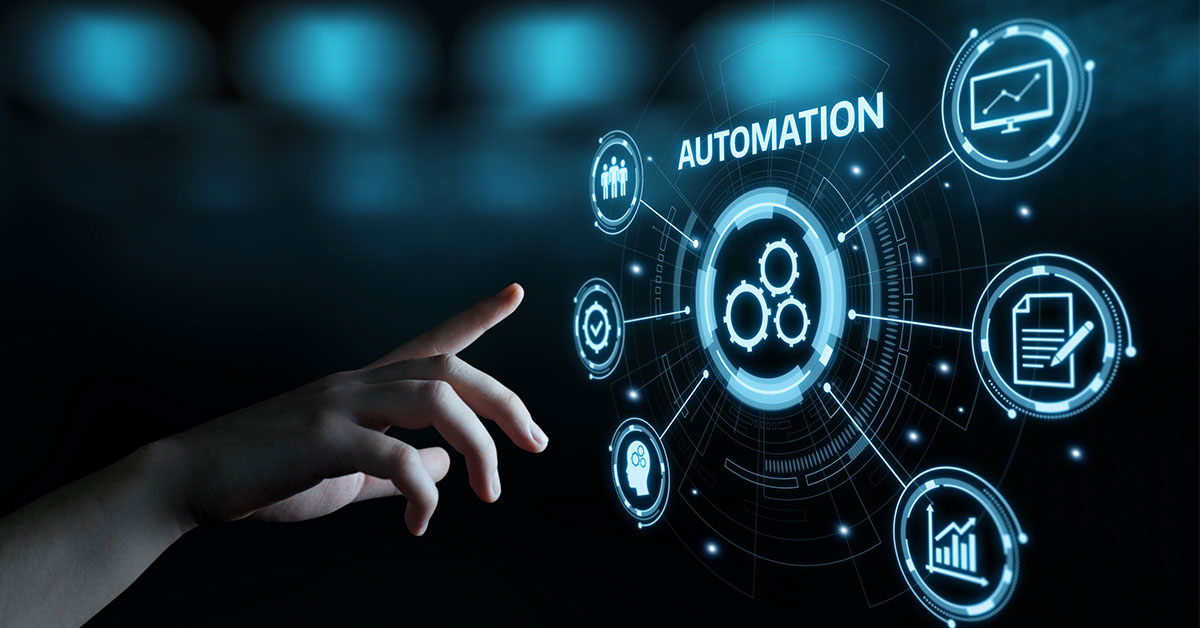Marketing automation is the use of software to automate simple, often time-consuming tasks. Businesses leverage automation to find leads, make sales, and nurture customer relationships. Automations can come in the form of sending emails, updating lead statuses and lifecycle stages, sending internal notifications, creating sales deals, and more.
Before marketing automation, a sales team would make telephone calls, go door-to-door, and post out promotional mail to find new prospects. This process was slow and inefficient. And despite often being a one-on-one interaction, the salesperson would know nothing about the potential customer and the interactions would still feel impersonal.
Marketing automation doesn’t just improve efficiency, it can also provide a more personalized experience for customers by learning more about the customer before marketing to them.
Role of Marketing Automation along the Customer Experience Journey

At MINDSCAPE, we like to conceptualize the customer experience journey through the AAARRR framework (sometimes known as the pirate funnel) of Awareness, Acquisition, Activation, Revenue, Retention, and Reputation. Marketing Automation plays a key role at all steps of the customer experience journey.
Marketing Automation in the Awareness Stage
The customer experience journey begins with a user becoming aware of your brand. Tactics like SEO, PPC, and social media marketing can help you spread awareness of your brand and drive traffic to your website.
In the awareness stage, the main tool that marketing automation can assist with is social media marketing. Customer relationship management (CRM) systems like HubSpot allow you to schedule social media posts far into the future at the exact time you desire. There’s no need to have someone at a computer to post on social media.
Instead of having to login to every single one of your social media accounts each day to post for your business, you can schedule posts for ALL of your social media accounts in one place at one time. Right now, MINDSCAPE has nearly 200 social posts scheduled to go out over the next 6 months.

Marketing Automation in the Acquisition Stage
Once a user is familiar with your brand and begins visiting your website, you need to make sure they have a clear path to making contact with you. That could take the form of a content offer such as an ebook, quiz, or guide or could be something simple like a contact form.
Unfortunately, marketing automation hasn’t developed to the point where it can make our content offers for us — you’ll have to do that yourself. But it can help you track users’ actions on your site before they even become contacts in the system. This is crucial since not everyone visiting your site will immediately fill out a form and share their information with you.
A clean and simple way to track user activity is, again, with a CRM like HubSpot. There, you’ll be able to see a visual timeline of their activity from before they became a lead and after.

If you aren’t on HubSpot, there are ways to embed tracking tokens within the cookies of your visitors to track where they go as well. This doesn’t always work because the user has to accept cookies from your site but this is still a solid alternative.
Marketing Automation in the Activation Stage
After a user becomes a lead, you need to help them along in their buying journey by providing them with answers to any questions they may have or any information they may need about your products or services. Things like email nurture campaigns, lead segmentation, and personalization can help you here.
Marketing automation really shines at the activation stage. In the past, a personalized email nurture campaign would mean someone would have to look at every single user’s data and take the time to segment for the right email for them one at a time. Now, you can send thousands of personalized emails all at once without even needing to be at the computer at the time of sending – with users who were segmented from your tracking automations.
Let’s say you have a service inquiry form that asks users to select the service they are interested in. With marketing automation, you can have the submission of the form trigger a confirmation email that lets the user know you follow-up with them within one business day. You can also have the submission send a notification and create a task for your sales team to reach out to the individual – and that is just the beginning. Based on the service the user selects, you can send a series of follow-up emails that educate the user on the specific service and explain why your business is the right choice for said service. Going even further, you can trigger subsequent emails based on the actions the user takes after receiving the first email. If they don’t open the first email, you can trigger an email with a more compelling subject line to send to them. If they open the email but don’t click the link you’d like them to, you can trigger an email that has a different selling strategy to send to the user.
Personalization through automation is immensely beneficial for many reasons. Emails with personalization have a 6.2% higher open rate. Not only are you getting more people to open your emails with personalization, you’re giving them significantly better information once the customer opens that email by marketing the products that are relevant to them.
Marketing Automation in the Revenue Stage
When a lead has all of the information they need to make their decision, how can you ensure they choose your business? Case studies, cart-abandonment campaigns, automating sales sequences and deals, and competitor comparisons are great tactics to employ at this stage.
One of the most powerful things marketing automation can do in the revenue stage is automating sales sequences and deals. Based on actions a user takes, you can create a new deal. You can even automate personal emails from your sales reps via sales sequence so your sales team can send personal emails to every Sales Qualified Lead without having to lift a finger.
Similar to the activation stage, information gathered about your customer can be used to segment and personalize their experience. This information can be used to send the customers case studies and competitor comparisons of the products that they are actually interested in.
Automations can also be put in place to send reminder messaging to customers who closed out of tabs with a full cart but never completed the checkout process. This is an extremely powerful tool to drive sales up without any effort on your end after the initial implementation.
Marketing Automation in the Retention Stage
The journey doesn’t end after your user becomes a customer. You need to focus on retaining your users via personalized content, deals and discounts, and other re-engagement tactics.
Marketing automation is the perfect tool to assist with the tactics at the retention stage. Since you have a purchase by this stage, you certainly have information about the customer to segment them and give them personalized content. Send them deals and discounts of similar products or accessories to your customer. For example, you can set up automations to send emails weekly so the customer gets consistent reminders about your brand without feeling bombarded.
Marketing Automation in the Reputation Stage
Even after someone has become a loyal customer, their journey isn’t over. To make them advocates for your brand, you need to show them you care about their opinion and are willing to make changes to improve their experience. Things like review solicitation campaigns and loyalty programs are great for this stage.
Here the role of marketing automation is to create a continued conversation with your established and potential customers beyond the point of purchase. You can set up automated messaging to send offers or thank you messages for being interested in your brand. Over time, you can send out consistent messaging to generate a review as well.
Having someone take the time to share their opinion about your brand with you is huge. If reputation campaigns generate survey or review fills, that information should be considered and valued.
One of the things we do a lot for customers is send out an automated NPS survey that funnels into a review campaign. If the user provides a good review, we automate to send an email that asks them to review us on Facebook, Google, or HubSpot.
Getting Started with Marketing Automation
At MINDSCAPE, we recommend HubSpot for all your marketing automation needs. HubSpot makes it easy for you to do everything mentioned in this article and more.
Yeah, we do that.





